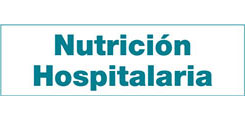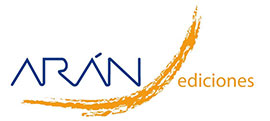Trabajo Original
Time-restricted feeding in dark phase of circadian cycle and/or westernized diet cause mixed hyperlipidemia in rats
Eryka Maria dos Santos Alves, Nathalia Caroline de Oliveira Melo, Ana Carolina Oliveira Costa, Humberto de Moura Barbosa, Nathália Cavalcanti de Morais Araújo, Gisélia de Santana Muniz, Elizabeth do Nascimento
 Número de descargas:
29359
Número de descargas:
29359
 Número de visitas:
6092
Número de visitas:
6092
 Citas:
2
Citas:
2
Compártelo:
Background: the dietary pattern that characterizes western diet is strongly associated with metabolic diseases and excess weight, as well as chronic illnesses. Misaligned feeding schedules can lead to or aggravate the development of such conditions. Aim: this study evaluated the influence of dietary composition and/or time-restricted feeding on the anthropometric and biochemical profile of adult rats. Methods: forty male rats, at 60 days of life, were divided into the following groups: Control (C), Restricted Control (RC), Westernized (W), and Restricted Westernized (RW). Results: westernized groups, in spite of a low energy intake (C = 5399 ± 401.2 kcal; RC = 4279.0 ± 476.2 kcal; W = 4302 ± 619.8 kcal; RW = 4081.0 ± 404.4 kcal, p < 0.001), had a higher body weight (C = 404.6 ± 39.1 g; RC = 335.1 ± 36.5 g; W = 488.9 ± 51.2 g; RW = 438.8 ± 36.5 g, p < 0.001) as compared to their paired controls (RC and C) — around 30 % and 20 % more for RW and W, respectively. The westernized diet caused glucose intolerance and mixed hyperlipidemia, characterized by higher concentrations of cholesterol (C = 40.8 ± 7.4 mg/dL; RC = 76.7 ± 10.8 mg/dL; W = 61.3 ± 20.2 mg/dL; RW = 42.2 ± 8.2 mg/dL), LDLc (C = 17.4 ± 7.5 mg/dL; RC = 38.8 ± 7.2 mg/dL ; W = 45.3 ± 15.8 mg/dL; RW = 11.0 ± 5.8 mg/dL), and triacylglycerol (C = 45.2 ± 15.0 mg/dL; RC = 73.2 ± 21.5 mg/dL ; W = 83.6 ± 23.4 mg/dL; RW = 57.5 ± 13.6 mg/dL) in the serum (p < 0.05). Conclusion: the effect of time-restricted feeding on body weight was strongly dependent on diet composition. The glucose tolerance test showed an influence of the circadian cycle phase. Mixed hyperlipidemia varied according to the presence of westernized diet and/or time-restricted food.
Palabras Clave: Hyperlipidemia. Time-restricted feeding. Westernized diet. Adult rats.
Artículos Relacionados:
Trabajo Original: Estudio del impacto del índice de masa corporal pretrasplante sobre el pronto funcionamiento del injerto renal
Rafael Fernandez Castillo , Gustavo R. Cañadas De La Fuente , Guillermo A. Cañadas De La Fuente , Emilia Inmaculada De La Fuente Solana , Rafael Jose Esteban De La Rosa , Juan Bravo Soto
Revisión: The effect of probiotics on the serum lipid levels in non-obese healthy adults with hyperlipidemia: A systematic review and meta-analysis of randomized controlled trials
Kaiwen Sun , Zhenzhu Liu , Hongyan Wang
Trabajo Original: Comparison of the biochemical, anthropometric and body composition variables between adolescents from 10 to 13 years old and their parents
Trabajo Original: Predictors of hyperlipidemia during the first half of pregnancy in Mexican women
Trabajo Original: Valoración del perfil lipídico y de la densidad mineral ósea en pacientes trasplantados renales
Revisión: Effect of chia seed (Salvia hispanica L.) consumption on cardiovascular risk factors in humans: a systematic review
Trabajo Original: A randomized double-blind controlled clinical trial demonstrating efficacy of different probiotic strains on serum lipids and glycemic biomarker
Gözde Okburan , Murat Baş , Sultan Ogmen
Artículos más populares
Revisión: Inteligencia artificial generativa ChatGPT en nutrición clínica: avances y desafíos
ChatGPT y otras herramientas de inteligencia artif...
Revisión: Suplementación con micronutrientes y sus beneficios: ¿por qué y cuándo?
Introducción: los micronutrientes participan en la...
-
Licencia creative commons: Open Access bajo la licencia Creative Commons 4.0 CC BY-NC-SA
https://creativecommons.org/licenses/by-nc-sa/4.0/legalcode




